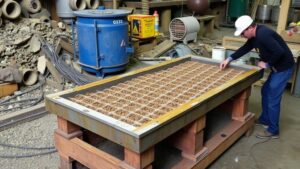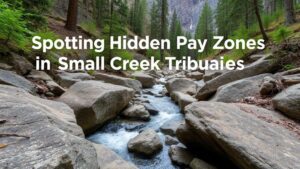How to Combine Dry Panning With Lightweight Dry Washing Systems
How to Combine Dry Panning With Lightweight Dry Washing Systems
Dry panning and lightweight dry washing systems are complementary techniques in the realm of prospecting for gold and other minerals in arid regions. By strategically combining these methods, prospectors can enhance efficiency and maximize recovery rates. This article will explore the principles of both techniques, how they interrelate, and practical applications in the field.
The Fundamentals of Dry Panning
Dry panning is a simple yet effective method employed in areas where water is scarce. It involves the use of a pan to separate gold from soil and gravel without the need for water. The process is based on the principle of gravity separation, utilizing the different densities of materials.
In dry panning, the practitioner fills the pan with material, then gently shakes it back and forth to allow heavier materials, such as gold, to settle to the bottom. The lighter materials are then carefully brushed off the top. This process requires skill and practice to increase efficiency and prevent loss of precious minerals.
Understanding Lightweight Dry Washing Systems
Lightweight dry washing systems operate on a similar principle but employ mechanical means to facilitate the separation of gold from lighter materials. These systems typically consist of a hopper, an air blower, and a collection tray, allowing for greater processing capability compared to manual techniques.
One of the most significant advantages of dry washing systems is their ability to process larger volumes of material quickly. According to some studies, a good dry washer can yield up to five times more processed material than traditional dry panning methods, significantly increasing the odds of gold recovery.
Combining Dry Panning and Dry Washing Systems
Integrating dry panning with lightweight dry washing systems can optimize mineral recovery while utilizing the strengths of both methods. Here are several strategies for effectively combining these techniques:
- Initial Material Assessment: Use dry panning first to assess the potential of a location. Panning allows for quick sampling of material to determine gold presence before investing in a dry washing system.
- Selective Processing: After identifying promising areas through dry panning, feed higher-quality material into a lightweight dry washer. This maximizes efficiency by focusing on the best material.
- Final Processing Stage: Employ the dry panning technique again after using the dry washer. This step acts as a quality control method to capture fine gold that might have escaped during the initial washing.
Real-World Applications and Case Studies
In practical applications, many prospectors have reported increased success rates by combining these methods. For example, a case study in the deserts of Nevada demonstrated a cooperative team that first utilized dry panning over a large area to identify hotspots of gold concentration. Following this exploration, they implemented a lightweight dry washing system in those specific areas, subsequently increasing their gold yield by over 30%.
Also, a prospector operating in Arizona shared insights into using dry panning to test multiple locations efficiently, refining their search before employing a portable dry washing unit to process the most promising samples.
Addressing Concerns and Limitations
While combining these two methods can yield significant benefits, there are some potential concerns to consider:
- Environmental Impact: Prospectors should be aware of local regulations regarding land disturbance and restoration efforts to minimize environmental harm.
- Operational Challenges: Transporting and setting up lightweight dry washing equipment can be cumbersome in remote areas; select an appropriate site that allows for easy access to resources and raw materials.
Actionable Takeaways
Combining dry panning with lightweight dry washing systems can lead to improved efficiency and higher gold recovery rates in dry regions. Here are actionable steps you can take:
- Begin with dry panning to identify potential gold-bearing locations.
- Once promising sites are located, use a dry washing system to process material at a larger scale.
- Perform a final panning step to ensure thorough recovery of all gold particles.
By strategically employing both methods, prospectors can leverage their strengths while minimizing labor and maximizing results.



